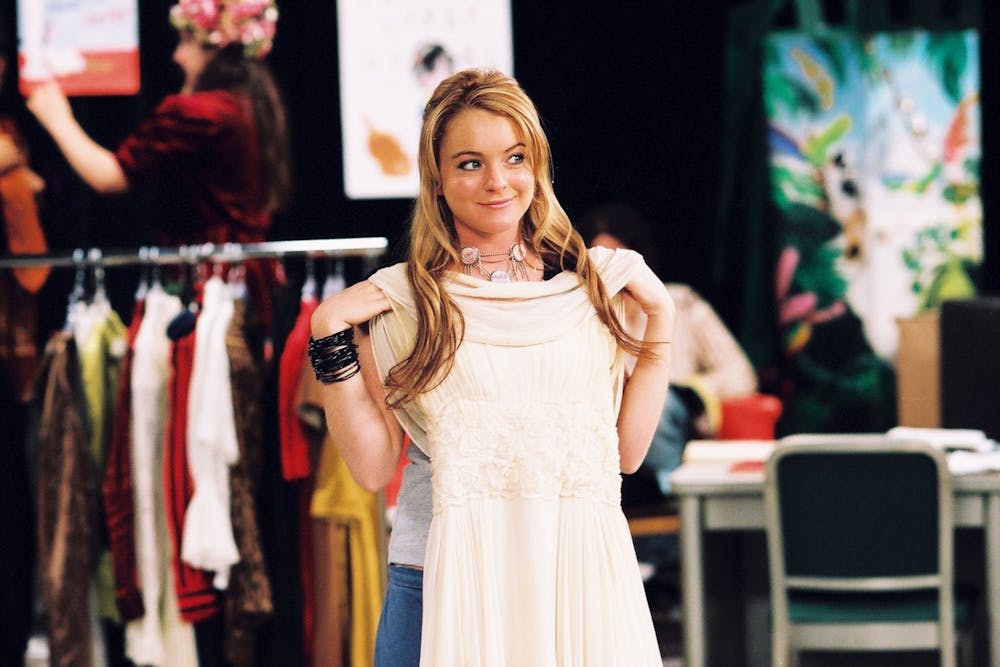I wanted a new pair of jeans recently. All I found on Depop was “Y2K 90s goth grunge mall punk low rise ultra-skinny flare Harley Davidson Levi’s.”
The catch? They weren’t even Harley Davidson jeans or Levi’s jeans.
Depop, a reselling app for fashion items, markets itself as a competitor to eBay or Poshmark for the Gen Z buyer. That branding tracks — most people buying and selling on the app are Gen Z, obsessed with niche aesthetics and uplifting their small business. One would hope that it creates a community, but spoiler alert: Depop’s community treats fashion the exact same way fast fashion enjoyers do, just with a moral superiority complex.
In concept, Depop is doing something good, aiding to eliminate tons of textile waste created by the fashion industry. In reality, the rush to sell clothes and compete with other teenage girls selling the same items forces teens to overprice and oversell their items. What once was a pair of acid washed jeans became “Y2K 90s goth grunge mall punk low rise ultra-skinny flare Harley Davidson Levi’s,” now being sold at the low-low price of $70.
Related: [COLUMN: What to wear: How to stay fashionable this semester]
It’s a masterclass in marketing. These people are smart, making it seem like these items are a hot commodity when they’re just regular items from Goodwill at an insane markup. They all seem to fight against overconsumption when that’s exactly what they’re promoting: buy from my business and I’ll send your items with Jolly Ranchers and Sanrio stickers. What company cares enough to do that?
Technically, it’s not creating more waste. Buyers and sellers on Depop aren’t contributing to fast fashion, but they have aided in the gentrification of thrifting. What once was accessible for everyone, especially those who can’t afford to buy new clothes, has become a bloody battle in the maxi skirt aisle. The sellers aren’t entirely to blame — rising prices are just a sign of inflation, and since we are in a fickle economic period, we can’t blame all of our issues on the ingenuity of teenage girls.
Related: [COLUMN: ‘Sexy:’ indie pop’s hottest girl album of 2022]
That being said, I think we can all agree that $85 for a Hollister sweater originally sold for $25 is a little insane. While Depop does take 10% from every sale, these prices often don’t reflect the quality of the garment. The culture of Depop is not built around quality garments but rather what clothes look cool. The prices reflect the demand, gouging pockets for cheaply made items because it’s a staple for that niche market. Hollister babydoll sweaters are not the best bang for your buck, but that doesn’t matter: image is everything.
Depop is not for the faint of heart. For those dedicated to an aesthetic, like scene kid or coquette, it’s the perfect place to find all sorts of clothes. It’s not built for the genre surfers who just wear clothes for the sake of wearing something.
I’ve learned my lesson. Next time, I’ll just shop in person for jeans, after hours of scouring the internet for the real-world terminology for “Y2K 90s goth grunge mall punk low rise ultra-skinny flare Harley Davidson Levi’s.” I’ll take my dark wash mid-rise flared jeans and search eBay for something to pair them with.
Support the Indiana Daily Student to beat Purdue's student newspaper, the Exponent, through making a donation to the IDS Legacy Fund! Whichever publication raises more money before the Purdue v. IU football game Nov. 26 "wins" the challenge, but all donations go to support student journalism at the respective publications. To help IU beat Purdue and support the IDS, follow this link to donate.






